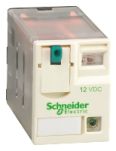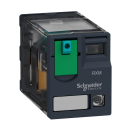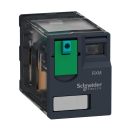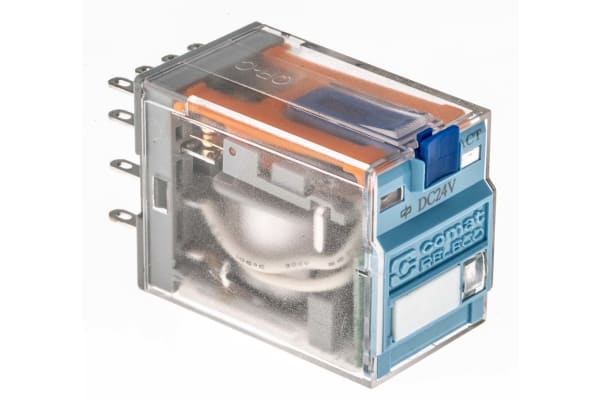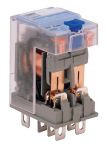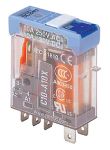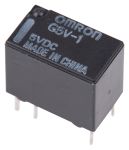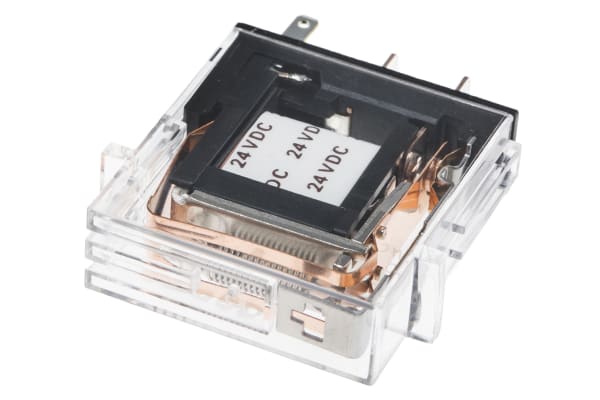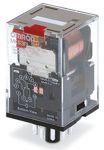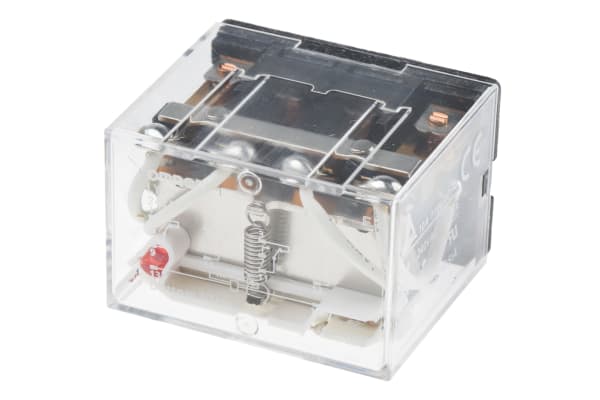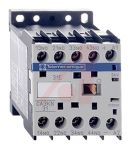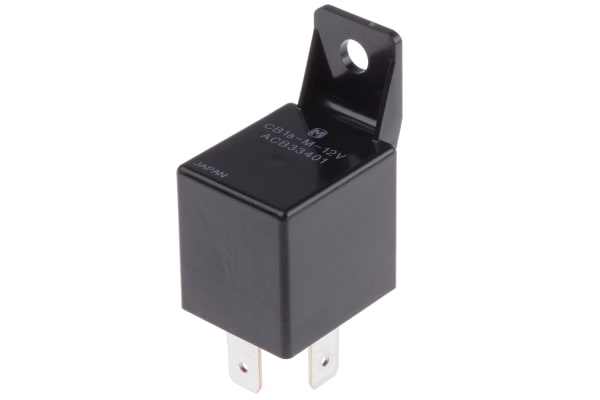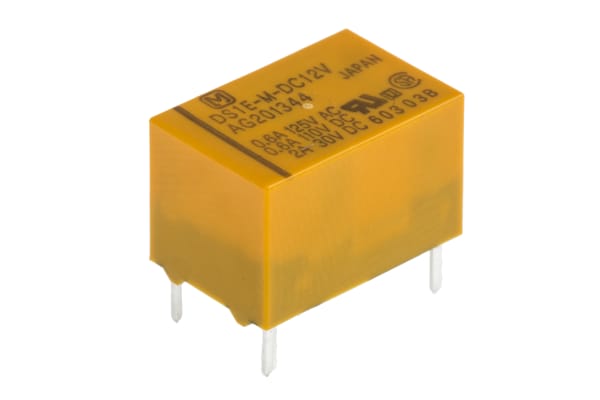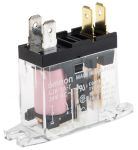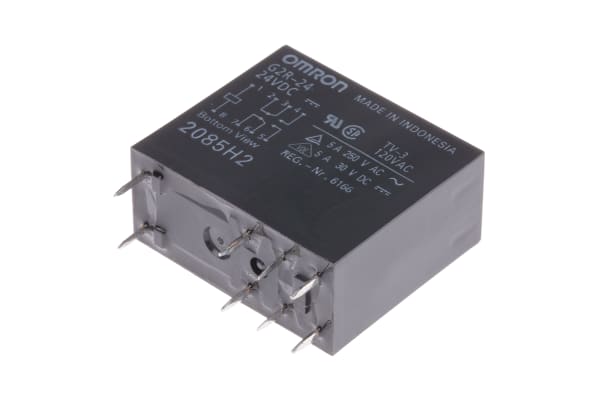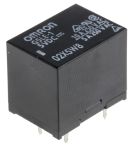Non-Latching Relays
Relays are electrical switches that are operated by electrical impulses with the primary function to open and close a circuit, they can also be referred to as industrial switches. There are 2 main types available, latching and non–latching relays.How do non-latching relays work?Non-latching relays are in a normally closed (NC) position and will stay in this state without power. When power passes through the circuit, the relay switched to a normally open (NO) position by using an internal coil to generate a magnetic force, holding this NO position. Once the current is turned off, it returns to the NC position. This makes non-latching relays well suited to push-button applications like keyboards and micro-controller input buttons.What are non-latching relays used for?Non-latching relays are highly durable and versatile components, making their performance long lasting and suitable for use in a wide range of applications, such as:Automotive enginesHousehold appliancesIndustrial machineryMedical equipmentTelecommunications equipmentWhat is the difference between latching and non-latching relays?Both types of relays in similar in design and function, however, a significant difference between them is that a latching relay will remain in the last position it when it was last powered, whereas a non-latching goes back to its normal position. This makes each more type of relay suitable for different applications. Considerations when selecting a relayWhen choosing a relay, it is important to consider a number of specifications to ensure it is fit for purpose, some factors include:Coil voltage – the required voltage to actuate the switching mechanism. If a voltage is too high this could damage the components, if it is too low then it will not actuate. Contact configuration – This is the state the contacts are in without power. For example SPST, single pole single throw.Contact material – the relay contacts are available in many materials that have certain properties. Common materials are gold, silver, tin oxide and nickel Coil power – the amount of power (watts) the coil operates at. This must match the power in the circuit for correct function. Coil resistance – the amount of resistance (ohms) in the circuit that the coil creates.
-
Schneider Electric, 12V dc Coil Non-Latching Relay 4PDT, 3A Switching Current Plug In, 4 Pole, RXM4GB2JD
IDR130,378.27 -
Schneider Electric, 110V dc Coil Non-Latching Relay 3PDT, 10A Switching Current Plug In, 3 Pole, RXM3AB2FD
IDR198,137.21 -
Schneider Electric, 48V dc Coil Non-Latching Relay DPDT, 12A Switching Current Plug In, 2 Pole, RXM2AB1ED
IDR160,901.26 -
Carlo Gavazzi, 24V dc Coil Non-Latching Octal Relay DPDT, 10A Switching Current Plug In, 2 Pole, RCP800224VDC
IDR211,038.68 -
Schneider Electric, 24V dc Coil Non-Latching Relay DPDT, 5A Switching Current Plug In, 2 Pole, RXG23BD
IDR190,899.80 -
Turck, 24V dc Coil Non-Latching Relay 4PDT, 5A Switching Current Plug In, 4 Pole, C9-A41FX/024VDC
IDR570,182.04 -
Turck, 24V dc Coil Non-Latching Relay DPDT, 6A Switching Current Plug In, 2 Pole, C7-T21DX/024VDC
IDR706,014.59 -
Turck, 24V dc Coil Non-Latching Relay SPDT, 10A Switching Current Plug In Single Pole, C10-A10X/024VDC
IDR396,484.20 -
Turck, 5V dc Coil Non-Latching Relay SPDT, 10A Switching Current Plug In Single Pole, C10-A10X/005VDC
IDR423,231.15 -
Omron, 5V dc Coil Non-Latching Relay SPDT, 1A Switching Current PCB Mount Single Pole, G5V-1-DC5
IDR38,914.19 -
Omron, 24V dc Coil Non-Latching Relay SPNO, 5A Switching Current Plug In Single Pole, G7T-1112S-DC24V
IDR188,592.22 -
Omron, 24V dc Coil Non-Latching Relay DPDT, 25A Switching Current Panel Mount, 2 Pole, G7J-2A2B-BW-1-DC24
IDR645,912.62 -
Omron, 120V ac Coil Non-Latching Relay 3PDT, 10A Switching Current Plug In, 3 Pole, MKS3PI-5 AC120
IDR280,056.30 -
Omron, 24V ac Coil Non-Latching Relay 4PDT, 10A Switching Current Plug In, 4 Pole, LY4N-AC24
IDR479,137.52 -
Schneider Electric, 12V dc Coil Non-Latching Relay DPDT, 10A Switching Current DIN Rail, 2 Pole, CA3KN22JD
IDR904,151.80 -
Panasonic, 12V dc Coil Automotive Relay SPNO, 40A Switching Current Flange Mount Single Pole, CB1A-M-12V
IDR68,388.28 -
Panasonic, 24V dc Coil Non-Latching Relay SPDT, 16A Switching Current PCB Mount Single Pole, ALZ12B24
IDR39,858.20 -
Panasonic, 12V dc Coil Non-Latching Relay SPDT, 2A Switching Current PCB Mount Single Pole, DS1E-M-DC12V
IDR84,016.89 -
Omron, 24V ac Coil Non-Latching Relay SPNO, 10A Switching Current Single Pole, G2R-1A-T-AC24
IDR109,085.60 -
Omron, 24V dc Coil Non-Latching Relay DPDT, 8A Switching Current PCB Mount, 2 Pole, G2RL-24-CF-DC24
IDR79,506.62 -
Omron, 24V dc Coil Non-Latching Relay DPDT, 5A Switching Current PCB Mount, 2 Pole, G2R-24-DC24
IDR72,898.55 -
Omron, 3V dc Coil Non-Latching Relay SPDT, 3A Switching Current PCB Mount Single Pole, G6E134PSTUSDC3
IDR58,004.17 -
Omron, 12V dc Coil Non-Latching Relay SPST, 8A Switching Current PCB Mount Single Pole, G6C-2114P-US-DC12
IDR97,337.92 -
Omron, 5V dc Coil Non-Latching Relay SPDT, 8A Switching Current PCB Mount Single Pole, G5LE-1-DC5
IDR20,663.33



